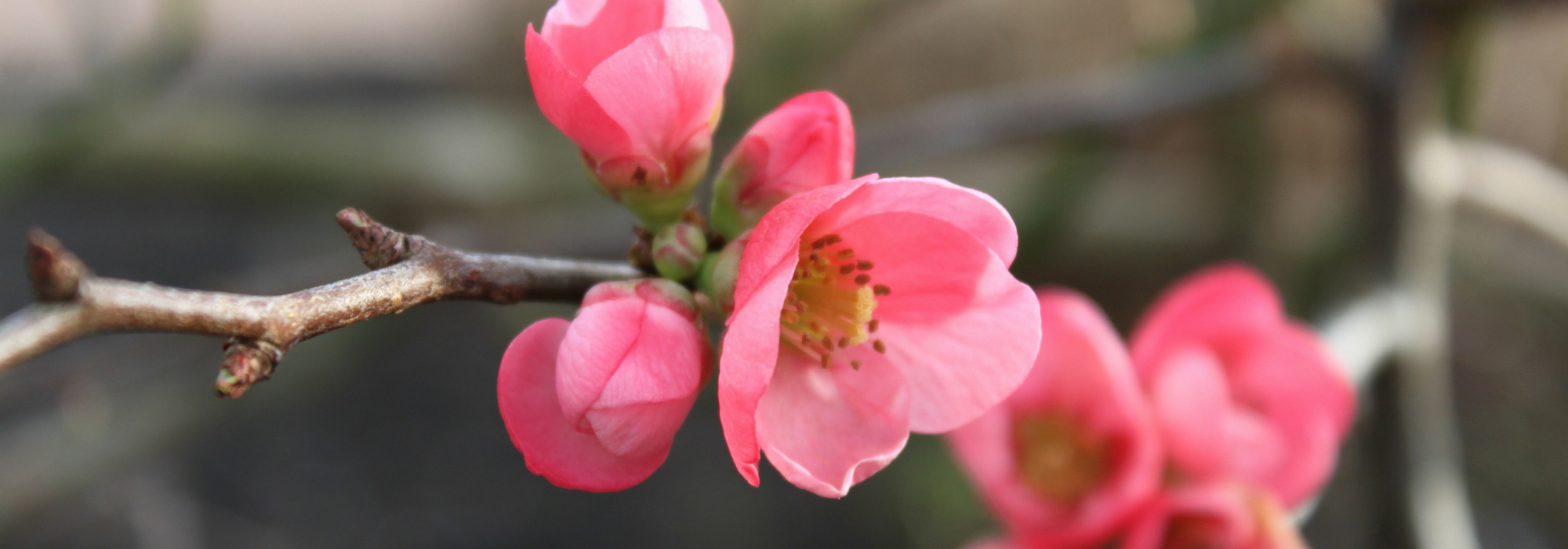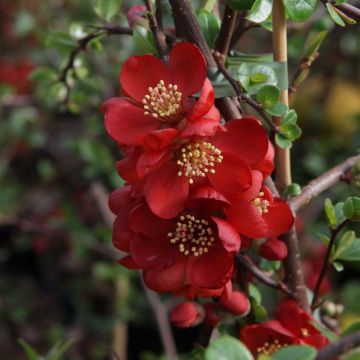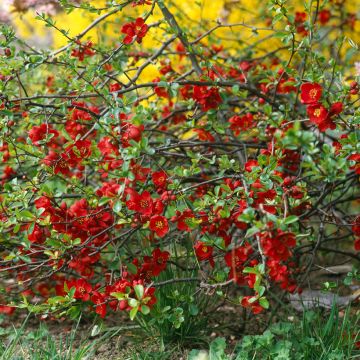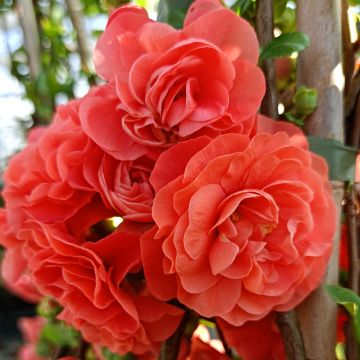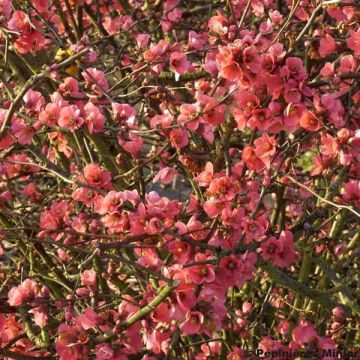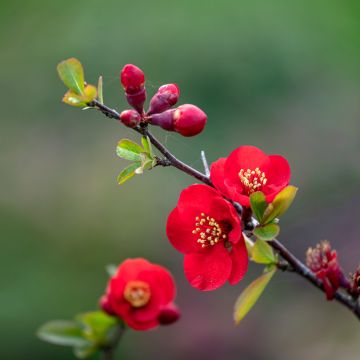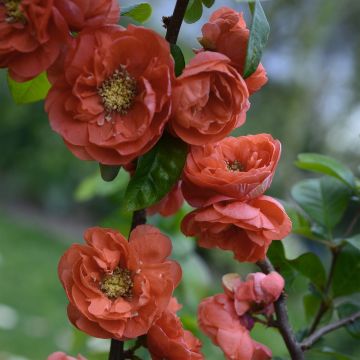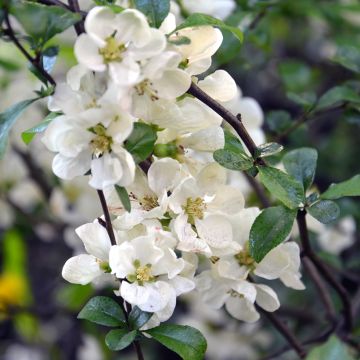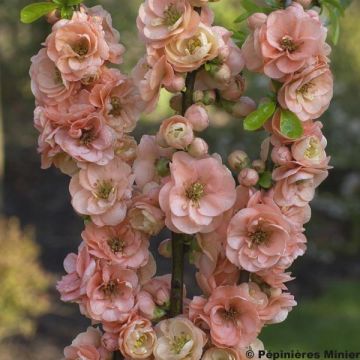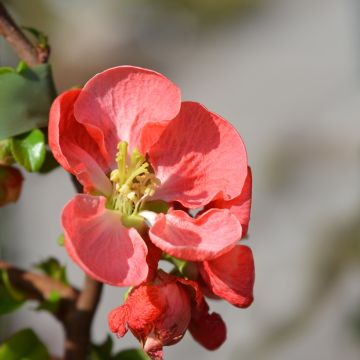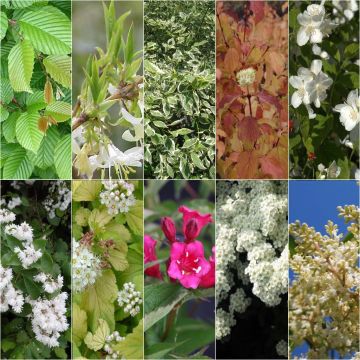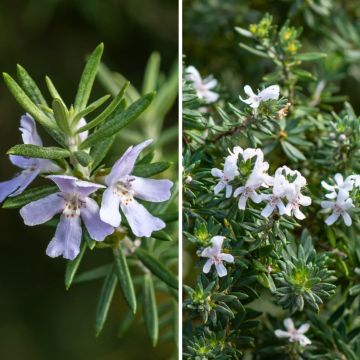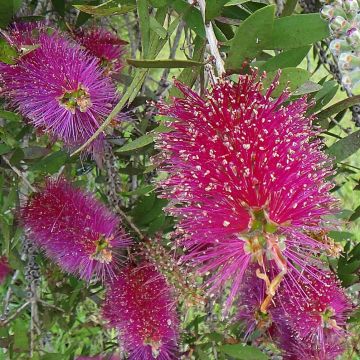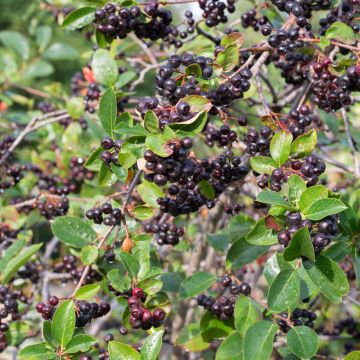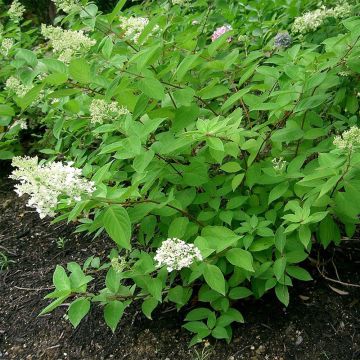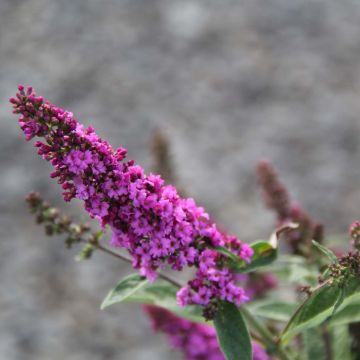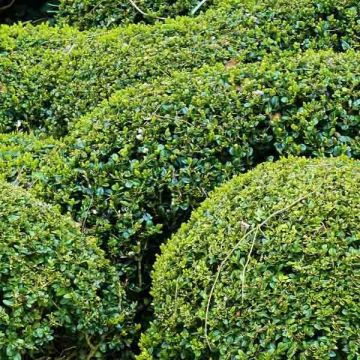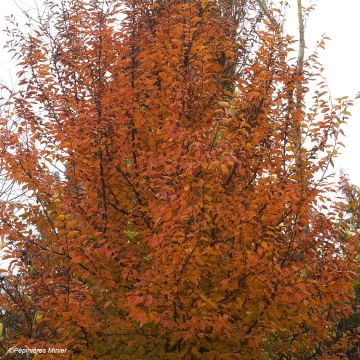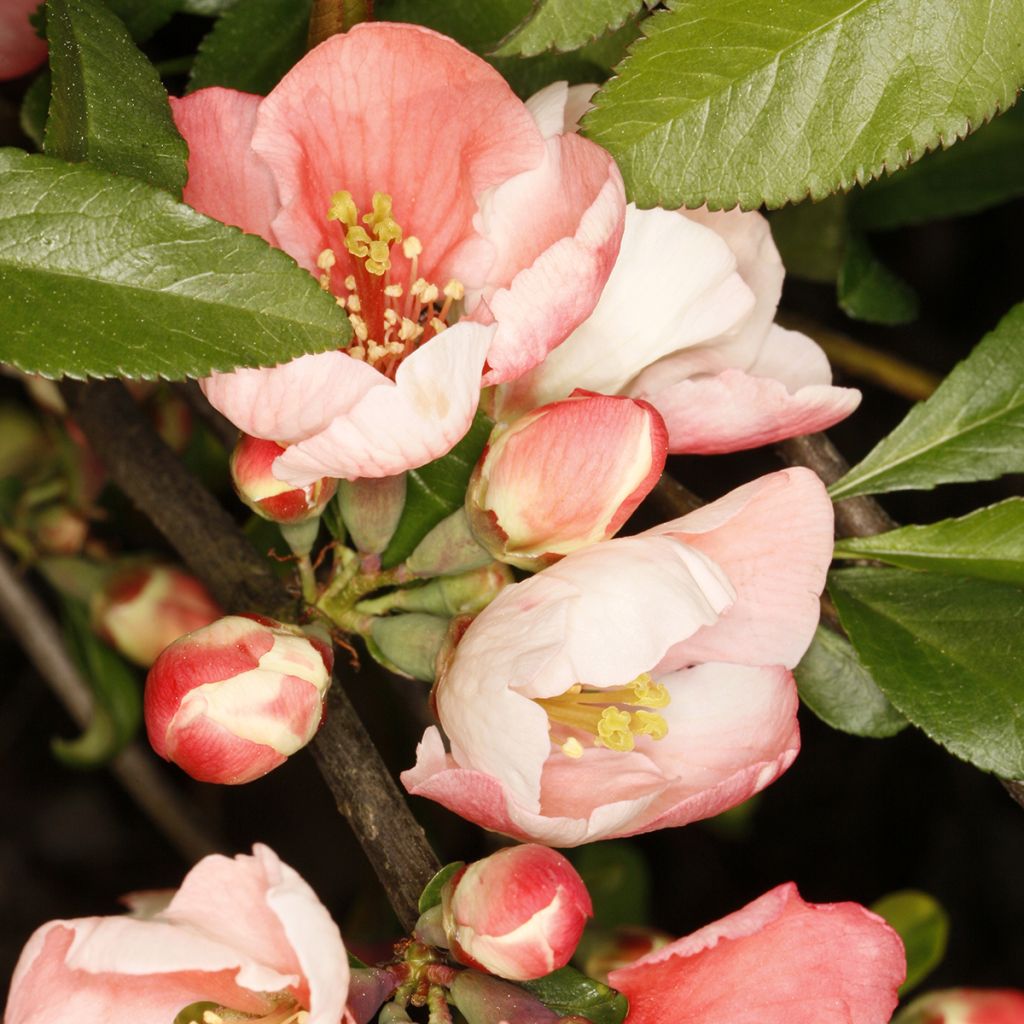

Chaenomeles speciosa Flocon Rose - Flowering Quince
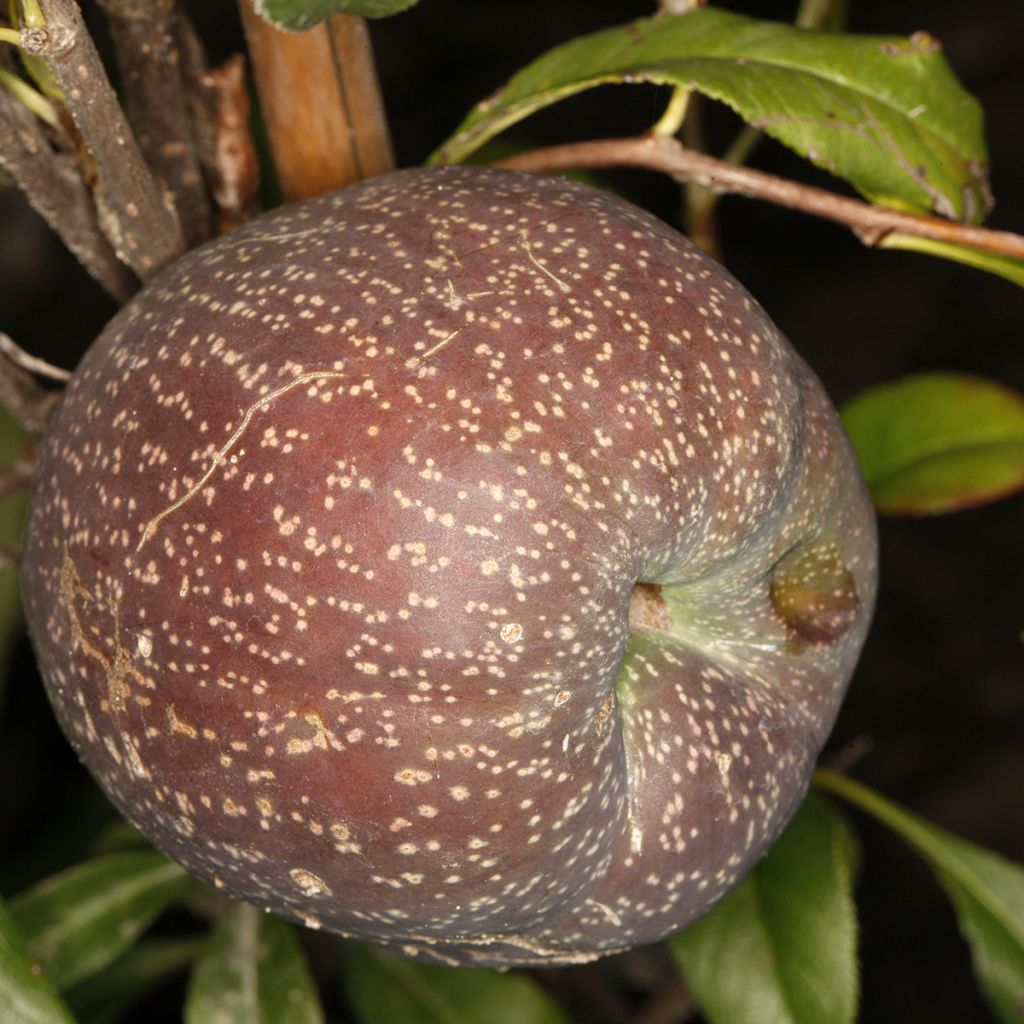

Chaenomeles speciosa Flocon Rose - Flowering Quince
Chaenomeles speciosa Flocon Rose - Flowering Quince
Chaenomeles speciosa Flocon Rose
Japanese Quince, Flowering quince
Special offer!
Receive a €20 voucher for any order over €90 (excluding delivery costs, credit notes, and plastic-free options)!
1- Add your favorite plants to your cart.
2- Once you have reached €90, confirm your order (you can even choose the delivery date!).
3- As soon as your order is shipped, you will receive an email containing your voucher code, valid for 3 months (90 days).
Your voucher is unique and can only be used once, for any order with a minimum value of €20, excluding delivery costs.
Can be combined with other current offers, non-divisible and non-refundable.
Home or relay delivery (depending on size and destination)
Schedule delivery date,
and select date in basket
This plant carries a 24 months recovery warranty
More information
We guarantee the quality of our plants for a full growing cycle, and will replace at our expense any plant that fails to recover under normal climatic and planting conditions.
Would this plant suit my garden?
Set up your Plantfit profile →
Description
Chaenomeles speciosa 'Flocon Rose' is a delightful variety of Japanese quince that is covered in delicate pink flowers during its early spring flowering season. It is a deciduous bush, with few thorns, and a slightly spreading habit, which also produces small quinces that ripen in autumn. Easy to incorporate into a loose hedge, this decorative variety is a lovely addition to a small garden. Its flowering branches are stunning in bouquets.
Chaenomeles speciosa 'Flocon Rose' is derived from C. speciosa, a thorny bush native to China and belonging to the Rosaceae family. Robust and hardy, this species grows well in any deep and loose soil, whether acidic or calcareous, in full sun or partial shade. The 'Flocon Rose' variety forms a large bush approximately 2m (7ft) tall and wide by the age of 10. Its flowering occurs from late March to early May, depending on the climate, on bare branches. It lasts for 3 to 4 weeks. The honey-rich flowers, shaped like cups and reaching 4cm (2in) in diameter, are composed of overlapping petals. Their colour varies from pale-pink to rosy-white. The corolla opens to reveal a heart of yellow stamens. The flowers are carried on very short pedicels in groups of 3 to 5 on the previous year's branches. This flowering is followed by the formation of small quinces, 5 to 6cm (2in) in size. They are initially green, becoming yellow and aromatic when ripe. They are edible after cooking. The leaves develop after the flowers and are narrow to lanceolate, measuring 3 to 9cm (1 to 4in) in length and 1.5 to 5cm (1 to 2in) in width, with a beautiful shining green colour on their upper surface. The deciduous foliage turns yellow and falls in autumn.
Japanese quinces, like forsythias and Japanese kerrias, bring us beautiful flowers in their simplicity, so eagerly awaited after a long winter. They are comfortable in all climates, as they are not afraid of heat or cold. They can be grown both as solitary plants or in a flowering hedge or border. The 'Flocon Rose' variety pairs well with fragrant bushes such as winter honeysuckle (Lonicera fragrantissima), which precedes it, rugosa roses (Rosa 'Hansa', R. rugosa 'Rubra', etc.), and white lilacs that will take over after its flowering, followed by the blooming of butterfly bushes. It can also be trained against a wall, near the house, paired with a winter jasmine, to enjoy it with every passing.
Uses, properties:
Japanese quince was once used to make the fragrant Cananga Essence, which has an aroma reminiscent of ylang-ylang extract, known as Cananga Odorata.
The bitter and astringent raw fruits are not suitable for consumption as they are. However, once cooked, they are edible and can be used in jellies or jams.
In Chinese medicine, dried fruits are used, among other things, for their anti-inflammatory, antibacterial, analgesic, and liver-protecting properties.
Chaenomeles speciosa Flocon Rose - Flowering Quince in pictures


Plant habit
Flowering
Foliage
Botanical data
Chaenomeles
speciosa
Flocon Rose
Rosaceae
Japanese Quince, Flowering quince
Cultivar or hybrid
Other Chaenomeles - Quince tree
View all →Planting and care
Chaenomeles speciosa 'Flocon Rose' thrives in the sun, where it shows more abundant flowering. You can also grow it in partial shade, in sunnier regions. Plant it in ordinary, deep, moist but well-drained soil. It tolerates drought well after 3 years of cultivation. It is a very easy plant to grow, which also tolerates limestone. When planting, mix your soil with compost. When grown as a hedge, space the plants 80cm (32in) apart. In a flower bed, the plants should be spaced 40 to 60cm (16 to 24in) apart. This Japanese quince tree resists pollution well. It requires little maintenance, apart from occasionally shortening the longest branches in spring, as they sometimes become less floriferous.
Planting period
Intended location
Care
Planting & care advice
This item has not been reviewed yet - be the first to leave a review about it.
Similar products
Haven't found what you were looking for?
Hardiness is the lowest winter temperature a plant can endure without suffering serious damage or even dying. However, hardiness is affected by location (a sheltered area, such as a patio), protection (winter cover) and soil type (hardiness is improved by well-drained soil).

Photo Sharing Terms & Conditions
In order to encourage gardeners to interact and share their experiences, Promesse de fleurs offers various media enabling content to be uploaded onto its Site - in particular via the ‘Photo sharing’ module.
The User agrees to refrain from:
- Posting any content that is illegal, prejudicial, insulting, racist, inciteful to hatred, revisionist, contrary to public decency, that infringes on privacy or on the privacy rights of third parties, in particular the publicity rights of persons and goods, intellectual property rights, or the right to privacy.
- Submitting content on behalf of a third party;
- Impersonate the identity of a third party and/or publish any personal information about a third party;
In general, the User undertakes to refrain from any unethical behaviour.
All Content (in particular text, comments, files, images, photos, videos, creative works, etc.), which may be subject to property or intellectual property rights, image or other private rights, shall remain the property of the User, subject to the limited rights granted by the terms of the licence granted by Promesse de fleurs as stated below. Users are at liberty to publish or not to publish such Content on the Site, notably via the ‘Photo Sharing’ facility, and accept that this Content shall be made public and freely accessible, notably on the Internet.
Users further acknowledge, undertake to have ,and guarantee that they hold all necessary rights and permissions to publish such material on the Site, in particular with regard to the legislation in force pertaining to any privacy, property, intellectual property, image, or contractual rights, or rights of any other nature. By publishing such Content on the Site, Users acknowledge accepting full liability as publishers of the Content within the meaning of the law, and grant Promesse de fleurs, free of charge, an inclusive, worldwide licence for the said Content for the entire duration of its publication, including all reproduction, representation, up/downloading, displaying, performing, transmission, and storage rights.
Users also grant permission for their name to be linked to the Content and accept that this link may not always be made available.
By engaging in posting material, Users consent to their Content becoming automatically accessible on the Internet, in particular on other sites and/or blogs and/or web pages of the Promesse de fleurs site, including in particular social pages and the Promesse de fleurs catalogue.
Users may secure the removal of entrusted content free of charge by issuing a simple request via our contact form.
The flowering period indicated on our website applies to countries and regions located in USDA zone 8 (France, the United Kingdom, Ireland, the Netherlands, etc.)
It will vary according to where you live:
- In zones 9 to 10 (Italy, Spain, Greece, etc.), flowering will occur about 2 to 4 weeks earlier.
- In zones 6 to 7 (Germany, Poland, Slovenia, and lower mountainous regions), flowering will be delayed by 2 to 3 weeks.
- In zone 5 (Central Europe, Scandinavia), blooming will be delayed by 3 to 5 weeks.
In temperate climates, pruning of spring-flowering shrubs (forsythia, spireas, etc.) should be done just after flowering.
Pruning of summer-flowering shrubs (Indian Lilac, Perovskia, etc.) can be done in winter or spring.
In cold regions as well as with frost-sensitive plants, avoid pruning too early when severe frosts may still occur.
The planting period indicated on our website applies to countries and regions located in USDA zone 8 (France, United Kingdom, Ireland, Netherlands).
It will vary according to where you live:
- In Mediterranean zones (Marseille, Madrid, Milan, etc.), autumn and winter are the best planting periods.
- In continental zones (Strasbourg, Munich, Vienna, etc.), delay planting by 2 to 3 weeks in spring and bring it forward by 2 to 4 weeks in autumn.
- In mountainous regions (the Alps, Pyrenees, Carpathians, etc.), it is best to plant in late spring (May-June) or late summer (August-September).
The harvesting period indicated on our website applies to countries and regions in USDA zone 8 (France, England, Ireland, the Netherlands).
In colder areas (Scandinavia, Poland, Austria...) fruit and vegetable harvests are likely to be delayed by 3-4 weeks.
In warmer areas (Italy, Spain, Greece, etc.), harvesting will probably take place earlier, depending on weather conditions.
The sowing periods indicated on our website apply to countries and regions within USDA Zone 8 (France, UK, Ireland, Netherlands).
In colder areas (Scandinavia, Poland, Austria...), delay any outdoor sowing by 3-4 weeks, or sow under glass.
In warmer climes (Italy, Spain, Greece, etc.), bring outdoor sowing forward by a few weeks.






























